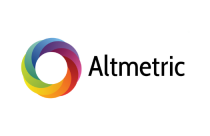Using Speech Recognition Software in Your Research

In Search of Freedom!
We’ve been using keyboards since Christopher Latham Stoles developed the first QWERTY design for the typewriter in 1872, but it took another century before Douglas Engelbart and Bill English patented the first computer mouse in 1970 as a “X-Y Position Indicator for a Display System.” Steve Jobs from Apple Computer is credited for seeing the potential of the tool at a visit to Xerox’s Palo Alto Research Center (PARC), adding it to the Apple Lisa computer when it was released in 1983.
Since then, the ability to interact with computers solely by voice like they do on the bridge of the Starship Enterprise on Star Trek, has remained elusive. For writers with less-than-proficient typing skills (affectionately known as “hunters and peckers”), there are two options—a Mavis Beacon typing skills course, or experimentation with speech recognition software.
Servant or Master?
Speech Recognition Software (SRS), also known as Speech Recognition Software, has always held tremendous promise. Voice command has the capacity to be much faster than keyboard strokes, and for those of us who think faster than we can type, the ability to get a sentence on the screen before it is lost in your head or backed-up in the queue can be a boon to productivity. However, for critics who have had some experience in the challenges of setting-up a Speech Recognition Software package on their own computers, the number of rules and regulations you must follow, combined with the changes you typically have to make in your own speech patterns, can leave you wondering if the software is working for you, or you are working for the software.
Operational Challenges
Once the system has been set-up correctly, the potential speed of an Speech Recognition Software package can be very attractive, but that increased level of productivity is not easily achieved:
- Training – most Speech Recognition Software packages have a specific list of commands needed to open, start, edit, and close documents. Getting comfortable with this new framework can take some time.
- Delays – if you are a fast talker, the system may not be able to keep up with you, leading to some frustrating delays waiting for the words to appear on the screen.
- Limited Vocabulary – while there are some specialty Software Recognition Software packages out there for physicians’ offices, for example, most are generic which means that they are unlikely to contain the specific vocabulary needed for scientific research reports.
- Enunciation – in order for the software to capture your spoken word, your speech has to be crisp and clear, which can be challenging for some.
- Headset – you can work with the computer’s built-in microphone, but the enunciation requirement will probably lead you to a headset microphone, which can also be challenging in terms of comfort and mobility.
More than Plug-and-Play
Getting the full benefit of a Speech Recognition Software package takes more than simply installing the software and plugging in your headset, despite what the marketing materials might claim. Nevertheless, if you aren’t the most proficient typist, it may be worth investing the time to learn the systems’ rules and regulations to start getting your words on the screen that much faster.









